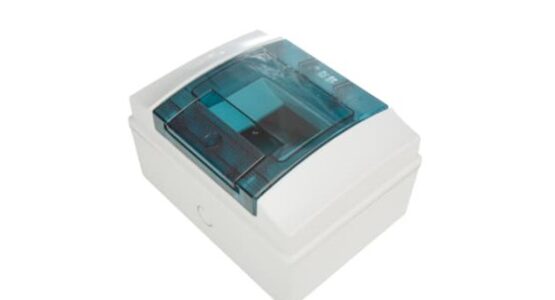Distribution boards are part of the system that provides electrical power to a structure. They are also known as a Panel Board or Breaker Panel. I was talking to a friend who was looking at some and became interested, as its technology I have not heard of before.
What do Distribution Boards do?
The job of the distribution board is to split the incoming electrical power feed and spread it out into secondary and/or subsidiary circuits. They are typically found in residential, commercial, and industrial settings.
Distribution boxes can seem confusing to those who have zero experience with them. In the guide below, you will find out everything there is to know about distribution boards, how they work, and what the differences are between distribution boards and consumer units.
To put it simply, a distribution board is works to split the electrical current and distribute it between subsidiary or secondary circuits. Most of the time, those circuits are protected by a breaker or fuse of some sort. It is basically a hub for the electrical current to move from one area of the distribution board to another
The mains power that comes into the board gets distributed into sub circuits, making it possible for both residential and business services to be used. Best of all, this all happens within a single enclosure, though some distribution boards aren’t necessarily enclosed. There are semi-enclosed and open distribution boards.
What are Distribution Boards Used for?
Now it’s time to learn what distribution boards are used for. It doesn’t matter whether it is a commercial board, an outdoor board, or a dedicated lighting board for huge public spaces, every version of the distribution board does basically the same thing. It takes in that electrical connection, splits it out, and reroutes it to the various sub-circuits.
Not only does this enable a litany of services to work, but it offers better and more precise control of the electrical supply to those different areas. With a distribution board, one could even isolate or completely shut down parts of the circuit without having to kill all of the power to the board.
Different Types of Distribution Boards
There is not one single flavor of distribution board, either. There are three different types, each serving a specific purpose. Let’s look at the three main types of distribution boards and what they happen to do.
Main switch. These are probably the safest and most robust among all of the protective devices out there as it relates to incoming mains power. The circuits attached are fully separated, with each of them independently protected from potential earth leakage through residual current breaker with overcurrent protection (RCBOs).
Dual RCD. The dual RCD doesn’t quite have the protective capacity that the main switch unit has, but it will work fine for just about any standard use. There are two circuit banks, each of which is protected by a pair of residual current device (RCD) breakers. These offer great protection against electrical fires and overheating, and even potentially touching a live wire.
High integrity boards. These are typically found in larger buildings where there are going to be a ton of sub-circuits that branch off beginning with the incoming mains supply. It is a combination of RCBOs and RCD protection that can create some truly flexible configurations.
Type A and B Distribution Boards
Both Type A and Type B distribution boards provide different configurations for the busbars. They offer different compatibility with both commercial and industrial setups, making certain that they adhere to location-specific standards and codes.
There are also sub-distribution boards that are basically a smaller breaker panel that is a subsidiary of a larger distribution board. That means greater control and better isolation when it comes to a subset of breakers and circuits.
Distribution boards are critical for safety and efficient operation. They allow for the isolation of faulty circuits, easy maintenance, and the ability to add or modify electrical circuits as needed. So if you’re working in an office building within a larger complex, distribution boards are an integral part of the electrical infrastructure, ensuring that each office and area has access to electrical power while maintaining safety and control.



